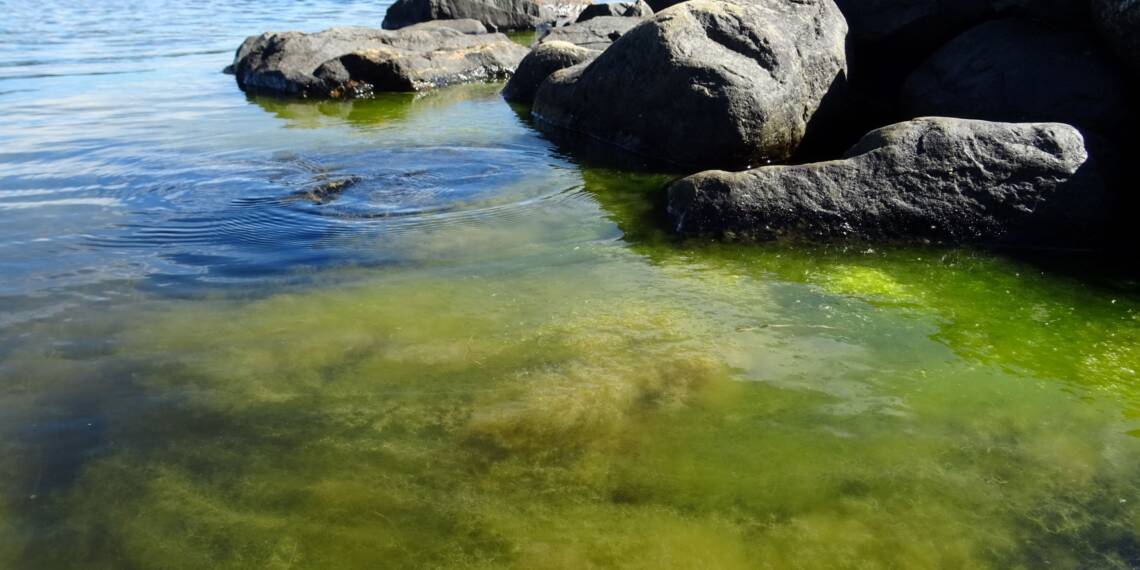
Nutrients and oxygen are key factors in the ecosystem
The nutrient content of the water regulates the algae production in the sea and, consequently, the production of the entire food chain. This, in turn, affects the oxygen economy of the deep waters of the Baltic Sea. There are extensive areas of oxygen depletion on the seabed.
The water in the Baltic Sea is rich in nutrients compared to the oceans: phosphorus and nitrogen. These nutrients accelerate algae growth, which in turn boosts other marine life. The sea produces an abundance of living organisms, from microscopic algae to predatory fish and seals.
This high level of production also means that a lot of dead organisms and animal waste sink to the sea floor. Bacteria and other decomposers on the seabed receive an abundance of food from the material falling from above. They eagerly break down the dead matter into its basic components. This decomposition releases nutrients into the seabed and water, and consumes oxygen from the water.
The problem arises because the water in the Baltic Sea is permanently stratified by salinity. The less salty, oxygen-rich surface layers do not mix with the salty deep layers. As decomposition continues vigorously, oxygen gradually depletes from the deep waters. This situation is known as the stagnant water phase or stagnation.
When the oxygen in the deep water is consumed, the decomposition of organic matter continues without oxygen, or anaerobically. During anaerobic degradation, toxic hydrogen sulphide is formed on the seabed. This ultimately kills or drives away all multicellular life forms from the deep areas.
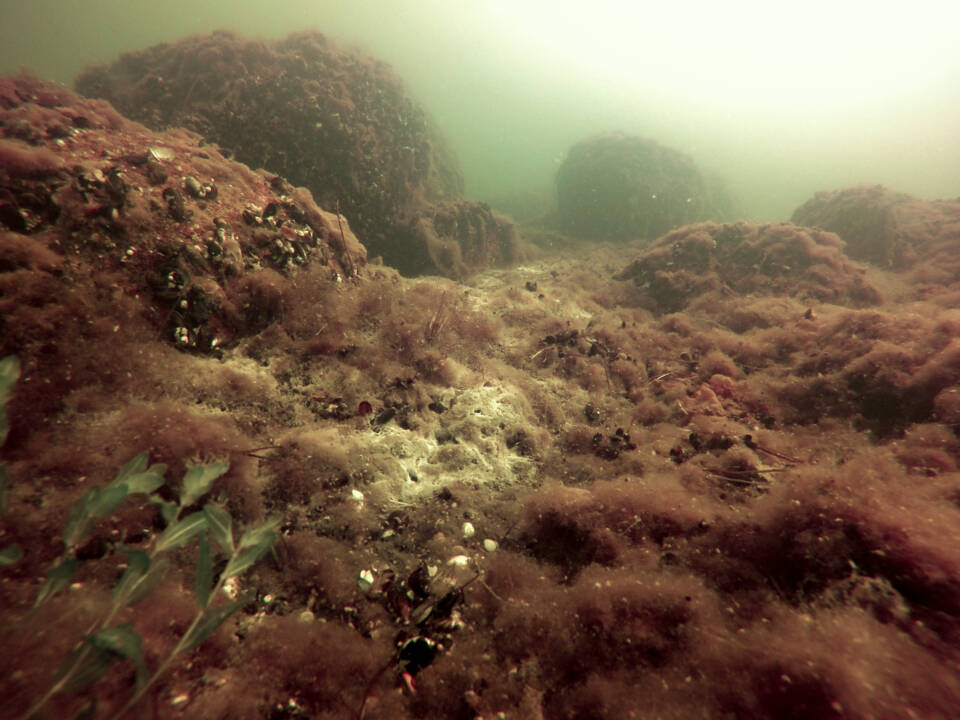
Oxygen depletion is partly a natural phenomenon
Periodic oxygen depletion in the deep basins is a characteristic feature of the Baltic Sea. It has occurred even before human activities began to burden the sea. However, human-induced nutrient loading has increased and expanded the areas affected by oxygen depletion.
-
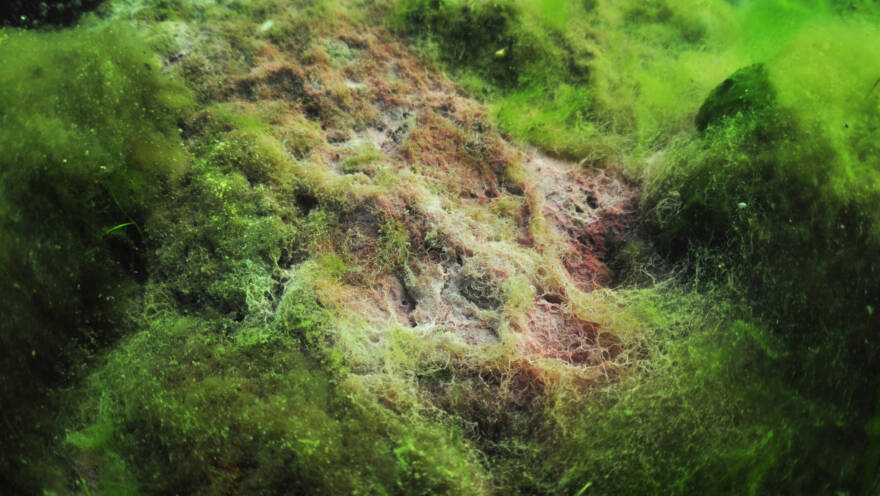 Find out more
Find out moreAnoxic bottoms
The situation improves only when a substantial influx of oxygen-rich water from the North Sea penetrates through the Danish straits into the Baltic Sea. Since the North Sea water is salty and therefore heavy, it sinks to the bottom of the Baltic Sea and flows into the deep basins, guided by the seabed’s contours. This way, the deep basins receive a welcome dose of oxygenated water.
However, large saltwater pulses that significantly impact the oxygen conditions in the deep waters are rare. The last such pulse arrived in the Baltic Sea in December 2014. The most recent saltwater pulse was in 2023, but it was half the size and thus had a lesser impact.
There is also a downside to these saltwater pulses. As new saltwater flows into the deep basins, the old deep water is displaced and pushed upwards along the seabed towards the coasts. On the coast, this nutrient-rich water upwells to the surface, leading to increased algae growth.
Extensive anoxic areas
The largest oxygen-depleted areas are found in the central Baltic Sea: the Gotland Deep and the deep-water areas extending north and east from there. In these regions, the oxygen content of the water decreases sharply at an average depth of 60 metres. This depth coincides with a sharp increase in salinity, known as the halocline.
The halocline can sometimes be as shallow as 40 metres, and at its deepest, it can be 80 metres. The depth of the halocline affects the extent of the oxygen-depleted areas on the seabed.
Since there is no seabed threshold between the main basin of the Baltic Sea and the Gulf of Finland, heavy, salty, and low-oxygen water can flow along the seabed into the Gulf of Finland. However, the Åland Sea threshold prevents this flow into the Gulf of Bothnia. Therefore, oxygen depletion is much more common in the Gulf of Finland than in the Gulf of Bothnia. Of course, the higher nutrient load in the Gulf of Finland also plays a role.
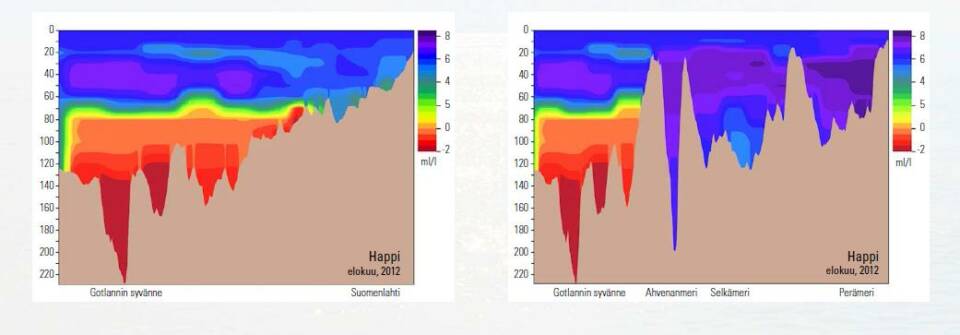
Oxygen depletion causes internal loading
Another feature of the Baltic Sea’s oxygen and nutrient dynamics is the so-called internal loading. When oxygen is depleted from the seabed, nutrients previously stored in the bottom sediments – primarily phosphorus – begin to be released into the water at an accelerated rate.
The released nutrients eventually reach the surface layers of the sea. This happens at the latest when a strong saltwater pulse enters the Baltic Sea, pushing the old deep water towards the coast.
In the surface layers, the nutrients stimulate algae growth and other biological activity. This, in turn, increases the deposition of organic matter to the seabed and intensifies decomposition processes there. The increased decomposition consumes the deep water’s oxygen reserves, leading over time to oxygen depletion. The vicious circle is formed.
-
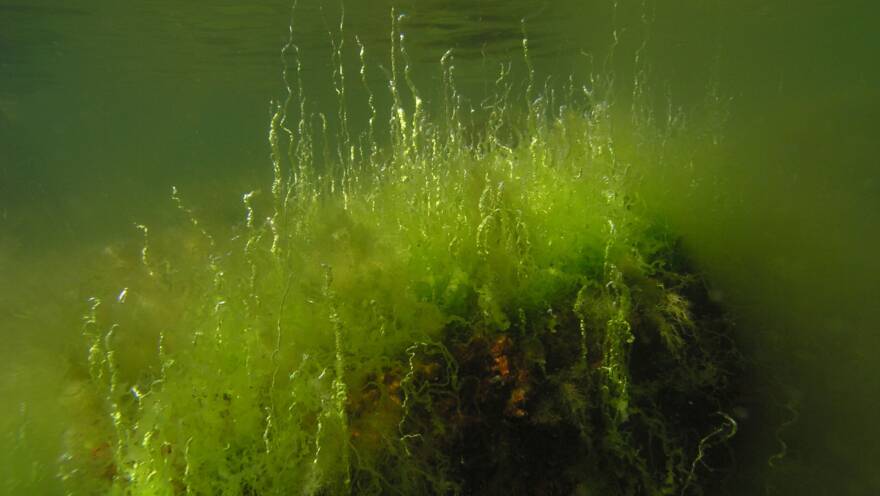 Find out more
Find out moreNutrients and their effect
-
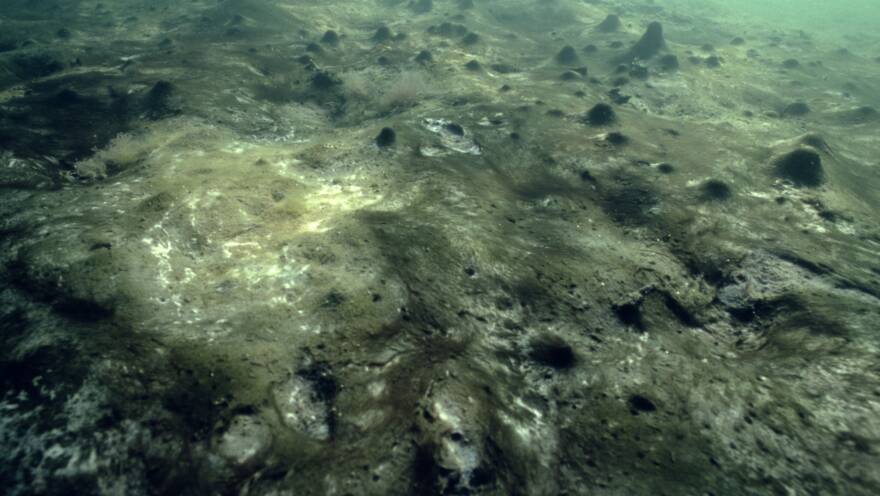 Find out more
Find out moreInternal loading

